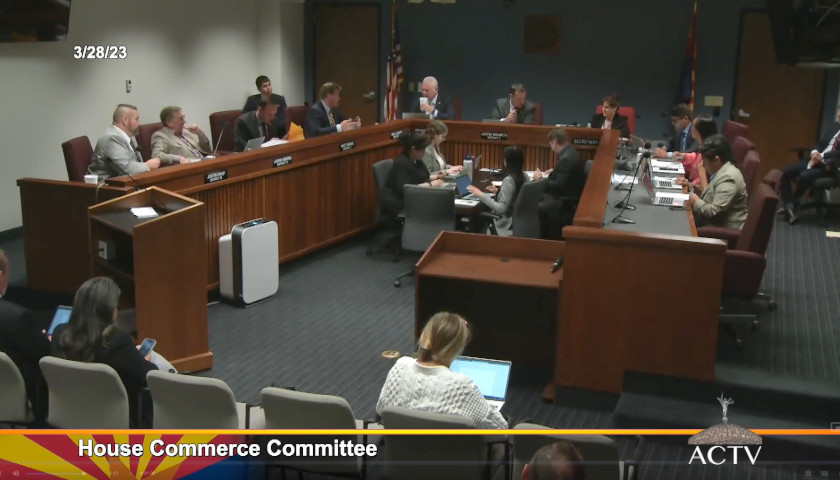Two bills passed through the House Commerce Committee Tuesday with bipartisan support, Senate bills (SB) 1161 & 1163, aiming to provide zoning reform to Arizona so more affordable housing can be made available.
“Big wins yesterday getting 1161 and 1163 out of House Commerce 7-3 for each bill. This is bipartisanship! R’s and D’s understand we need zoning reform in AZ,” tweeted State Senator Steve Kaiser (R-Phoenix).
Big wins yesterday getting 1161 and 1163 out of House Commerce 7-3 for each bill. This is bipartisanship! R’s and D’s understand we need zoning reform in AZ. We now have 3 live housing bills. Gov of CO and MT running zoning reform right now as well. pic.twitter.com/6ohI6jJBEW
— Steve Kaiser (@kaiser4az) March 30, 2023
The committee voted to adopt strike-everything amendments for both bills, which removed the entirety of their previous text and had it replaced by the new zoning policies. As the bills’ sponsor, Kaiser spoke in their defense during the committee.
First up, amended SB 1161 would expand where a municipality can create low-income housing. Specifically, cities with a population greater than 25,000, in any existing commercial, mixed-use, or multifamily residential district within a half mile of a light rail or streetcar stop, may allow by right for the construction of an affordable housing structure.
During the meeting, Kaiser explained that municipalities could create office buildings in commercial areas near light rails by right and without public input. Kaiser said his bill would allow cities to do the same with affordable housing units. These units could be up to seven stories high, and all housing units built in these areas charge rent at 80 percent of the area median income AMI.
State Representative Justin Heap (R-Mesa) had questions regarding this 80 percent, and a representative of Dominium, an affordable housing development company, spoke to the committee to clarify things. She stated that the AMI is the midpoint in a specific area or city’s income distribution, calculated by the U.S. Department of Housing and Urban Development (HUD). After finding the AMI, 80 percent of that number would become the income limit for that area. From there, the annual rent would be determined by taking 30 percent of the income limit and dividing it by 12 for a monthly fee. The numbers are also adjusted based on the number of residents in the unit. For example, in 2022/23 Phoenix, 80 percent of the AMI is $49,500 for a single resident, while it is $70,650 for a family of four.
Furthermore, the bill stipulates that all municipalities must produce a housing needs assessment in 2024. This assessment would then be produced every five years, and include a population growth projection and the housing needed to meet the population. Additionally, if a municipality offers an affordable housing voucher program, it must prioritize state residents on the waiting list over those who may be from out of state.
The other bill, SB 1163, states that municipalities with a population of over 30,000 and vacant land in zones that allow for “single-family residential uses” cannot require certain “restrictive development standards.” These standards involve the minimum dimensions of a lot being developed; for example, a city could not require a lot size to be greater than 4,000 square feet at a minimum. Additionally, if there is an application to create a duplex or triplex, the city must provide “additional residential zones” for the projects. Although, Kaiser said the cities would still have control over where these complexes are ultimately built.
However, a League of Arizona of Cities and Towns representative shared several concerns with the committee, one being that the 4,000 feet limit was too restrictive. Kaiser said he would be willing to continue working on the bill to make it more accommodating.
“I believe in individual property rights. I believe we should make every prosperous, and we can only do that through affordability. We need to have housing options for young, middle, and seniors, and we don’t have that,” Kaiser told the committee.
The bills must pass the House Floor before moving to the governor’s office for final approval.
– – –
Neil Jones is a reporter for The Arizona Sun Times and The Star News Network. Follow Neil on Twitter. Email tips to [email protected].








